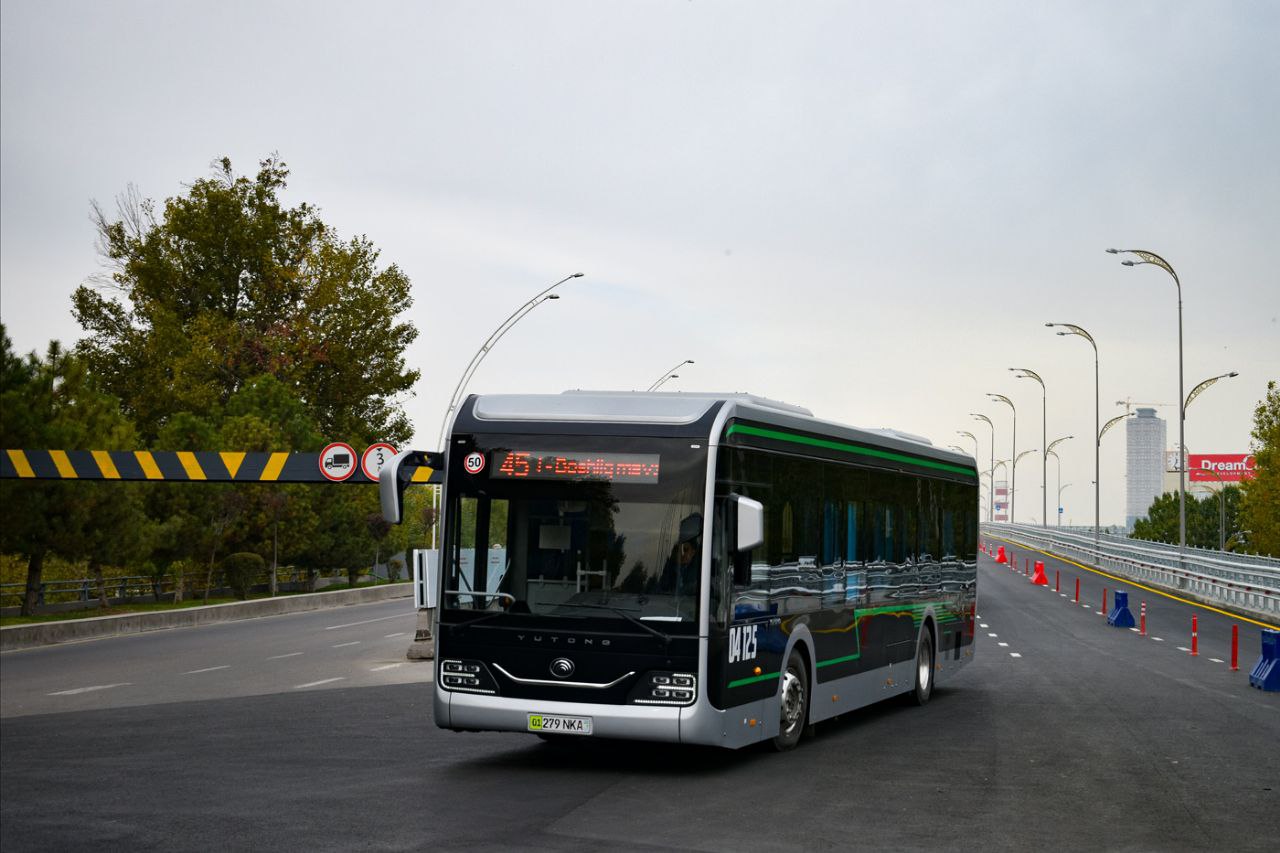The President identified priority directions for the development of the public transport (PT) system in Tashkent until 2025.
The changes that await the sector in the coming years are reflected in the Concept approved by the head of state:
• integration of all modes of transport, increasing the level of use of public transport by the population by at least two times;
• development of public safety infrastructure, expansion of the metro network, organization of modern transport hubs, as well as bus stops based on standard designs, redevelopment of intersections and streets to organize priority public transport traffic;
• financial recovery of enterprises in the sector and doubling the share of the private sector by improving the system of financing carriers and tariff policy;
• development of bicycle and other non-motorized modes of transport, including the organization of paths convenient for pedestrians and cyclists, bicycle rental and special parking for them;
• implementation of intelligent vehicle traffic control systems ("smart intersection", "smart bus" and "smart stop") and ensuring road safety through the widespread use of digital technologies and innovative approaches;
• updating the transport fleet with modern, environmentally friendly buses, including electric buses.
Target indicators:
• increasing the share of public transportation in the total volume of passenger traffic from the current 21 percent to 43 percent;
• increasing the daily volume of OT passenger traffic by at least two times, bringing it to 2.7 million passengers per day;
• reduction by 2 times of the average traffic interval;
• phased introduction of 159 bus routes based on the new public transport network, including 11 main, 14 ring, 92 connecting and 42 feeder routes;
• updating the OT rolling stock through the acquisition of 1,063 buses, including 673 electric buses;
• creation of 16 modern transport hubs for convenient and quick transition from one type of transport to another;
• reconstruction of 1,160 bus stops based on standard designs.
Convenient stops
A typical bus stop design will take into account the creation of favorable conditions for passengers, including people with limited mobility.
At the same time, the land plots on which these stops will be located will be provided to business entities for temporary use on a lease basis through online electronic auctions.
Entrepreneurs will be allowed to place advertising media, ATMs and self-service machines (vending) intended for the purchase of food products at these stops.
At the same time, on the land plots where new and reconstructed stops will be installed, it will not be possible to place trade and consumer services, except for self-service machines (vending).
• integration of all modes of transport, increasing the level of use of public transport by the population by at least two times;
• development of public safety infrastructure, expansion of the metro network, organization of modern transport hubs, as well as bus stops based on standard designs, redevelopment of intersections and streets to organize priority public transport traffic;
• financial recovery of enterprises in the sector and doubling the share of the private sector by improving the system of financing carriers and tariff policy;
• development of bicycle and other non-motorized modes of transport, including the organization of paths convenient for pedestrians and cyclists, bicycle rental and special parking for them;
• implementation of intelligent vehicle traffic control systems ("smart intersection", "smart bus" and "smart stop") and ensuring road safety through the widespread use of digital technologies and innovative approaches;
• updating the transport fleet with modern, environmentally friendly buses, including electric buses.
Target indicators:
• increasing the share of public transportation in the total volume of passenger traffic from the current 21 percent to 43 percent;
• increasing the daily volume of OT passenger traffic by at least two times, bringing it to 2.7 million passengers per day;
• reduction by 2 times of the average traffic interval;
• phased introduction of 159 bus routes based on the new public transport network, including 11 main, 14 ring, 92 connecting and 42 feeder routes;
• updating the OT rolling stock through the acquisition of 1,063 buses, including 673 electric buses;
• creation of 16 modern transport hubs for convenient and quick transition from one type of transport to another;
• reconstruction of 1,160 bus stops based on standard designs.
Convenient stops
A typical bus stop design will take into account the creation of favorable conditions for passengers, including people with limited mobility.
At the same time, the land plots on which these stops will be located will be provided to business entities for temporary use on a lease basis through online electronic auctions.
Entrepreneurs will be allowed to place advertising media, ATMs and self-service machines (vending) intended for the purchase of food products at these stops.
At the same time, on the land plots where new and reconstructed stops will be installed, it will not be possible to place trade and consumer services, except for self-service machines (vending).
